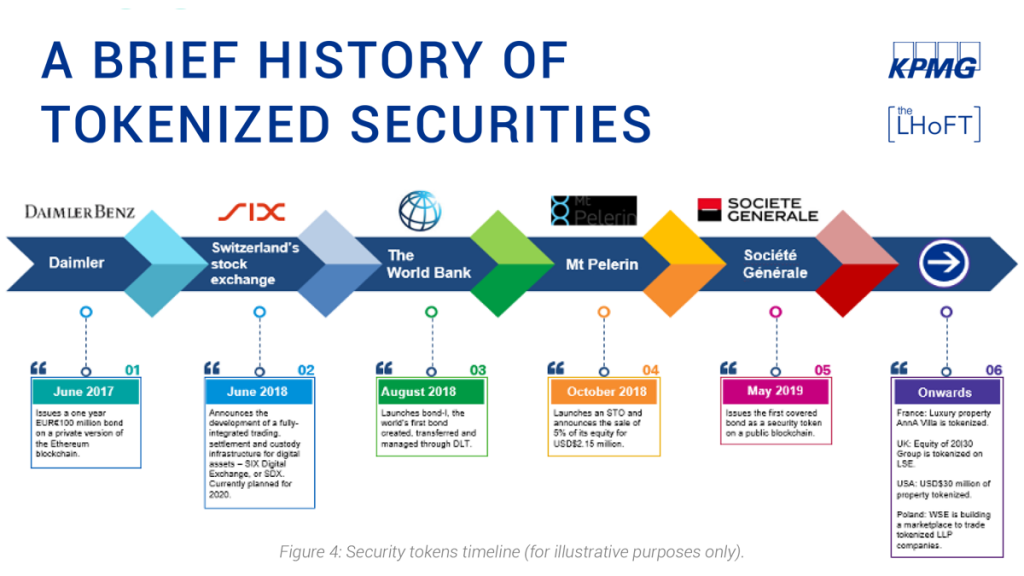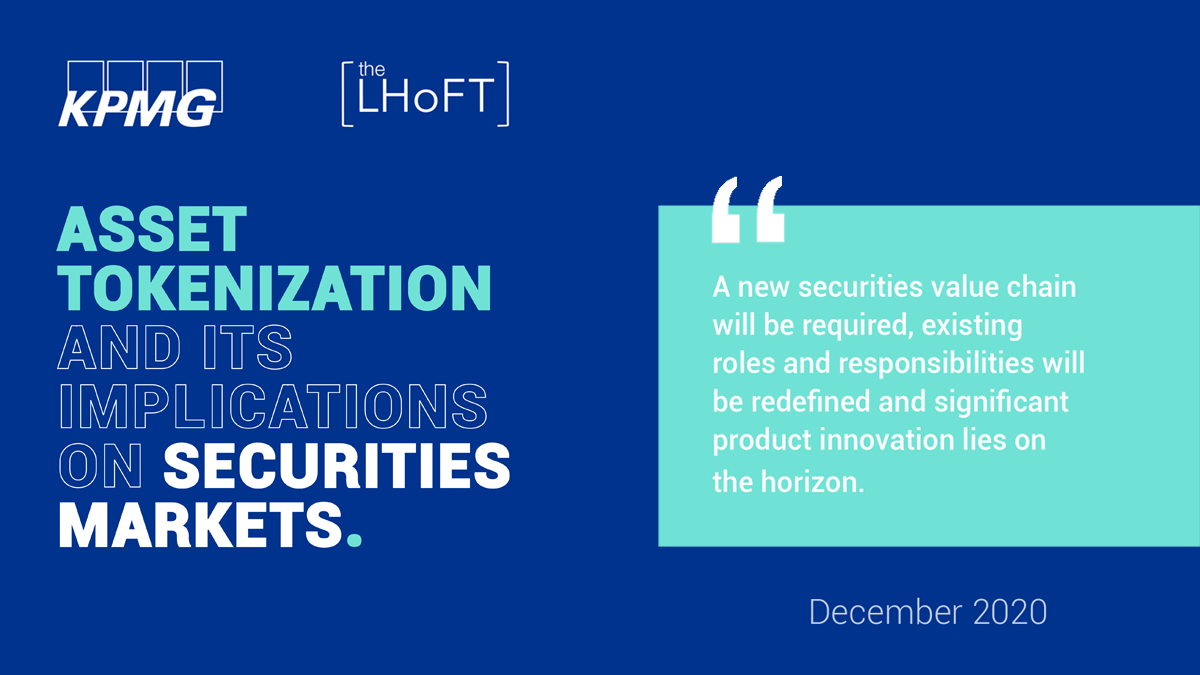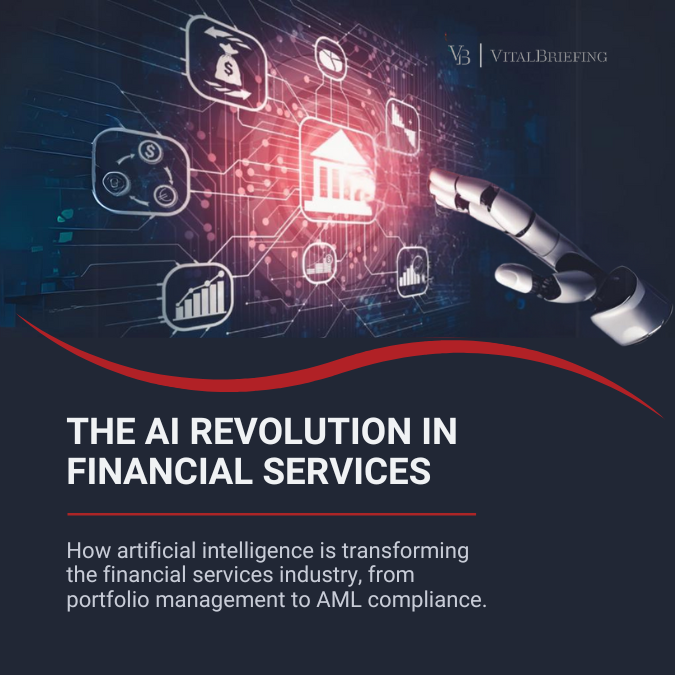The digitalization of finance is long overdue. The rise of fintech solutions shows how the transformative power of technology can tackle the inherent limitations of our current financial system. Distributed ledger technologies (DLTs), like blockchain, are poised to play an important role in revolutionizing financial markets. They have the potential to eliminate many of the intermediaries required for financial transactions, lower transaction and financing costs, enhance transparency and regulatory oversight and make financial services more inclusive.
Tokenization could potentially have wide-reaching impacts — as, theoretically, any asset such as gold, real estate and commodities could be tokenized on the distributed ledger.
Asset tokenization is the digitalization of real-world assets or financial instruments and the issuance of “representative tokens” using DLT. The asset is digitally recorded and value can be transferred within the distributed ledger. Tokenization could potentially have wide-reaching impacts — as, theoretically, any asset such as gold, real estate and commodities could be tokenized on the distributed ledger.
The concept of securities tokenization isn’t new — securitization essentially takes a group of similar assets and transforms them into a security. The benefits are quite well known, including cost efficiency, risk transfer and liquidity. What makes the tokenization of assets with DLT different?

Issuing securitized products never actually disrupted the securities market value chain – it just created a new asset class. However, by tokenizing assets through DLT, the entire value chain is disrupted. From its most visible application in equity issuance and capital raising for small companies through ICOs, STOs or even DAGES, through to post-trade processes and the clearing and settlement of securities. DLT can challenge the current composition of financial markets, affecting infrastructure and participants alike. An essential advantage of tokenization is the global reach it confers to investors.
Tokenization could also affect repurchase activity for the funding of positions, as well as securities lending activities. Tokenization in this field would allow for more direct and faster collateral unwinding, easier collateral mobilization across security pools and more efficient use of the balance sheet. DLT usage could expedite and condense trade clearing and settlement close to real-time; reducing counterparty risks, freeing up collateral and potentially producing capital efficiencies for trade participants. The main gains of this transformation will come from large numbers of participants exchanging between each other in the network, suggesting that DLT is particularly useful for payment systems and trading platforms.
What does the use of DLT and tokens mean for the industry? In essence, the securities markets of the future will most likely be disrupted.
A new securities value chain will be required, existing roles and responsibilities will be redefined and significant product innovation lies on the horizon.
The part of the value chain where Luxembourg holds a competitive advantage is the one that will most likely be impacted.
In other words, industry participants need to wake up — transform, or risk perishing.
Sitting still isn’t an option. Market participants must understand and capitalize on the potential changes to business models across the value chain or risk being seriously disrupted, disintermediated or rendered obsolete.
Luxembourg’s financial market players must rethink their strategies and develop solutions as well as train their staff on the capabilities of the DLT. Sitting still isn’t an option. Market participants must understand and capitalize on the potential changes to business models across the value chain or risk being seriously disrupted, disintermediated or rendered obsolete. While there are many opportunities ripe for the taking, Luxembourg is clearly best placed to capture several low-hanging fruits.
The success of physical asset tokenization will ultimately depend on the regulatory framework and the extensive adoption of the mechanism by a large base of investors. An example of such a traditional actor leading this adoption is Fidelity Investments — a 72-year-old company administering over USD$7.2 trillion in client assets — who launched a separate company called Fidelity Digital Asset Services responsible for the custody of certain cryptocurrencies and trade executions. [
Tokenization is not just a fad for fintech firms – traditional financial services firms are also increasingly driving adoption of the technology and methodology. UBS, the Zurich-based Swiss bank, is reportedly planning to tokenize assets — including debt, structured products and physical gold — in its securities division. By doing so, it aims to democratize certain assets, such as private equity, which are considered inaccessible to most investors. Breaking up assets into smaller parts that are then assigned to individual tokens could solve this issue.
DLT is a flexible technology that can and will be used for different purposes. HSBC, a major global banking group and the largest bank in Europe, implemented its tokenization-based Digital Accounts Receivable Tool that will automate the accounts receivable process and improve communication security between network participants.
Will asset tokenization happen overnight? Most likely not — however, progress is accelerating.
We have just begun to scratch the surface of asset tokenization’s potential. As of now, there is no common EU framework nor an international agreement. Questions regarding financial stability, consumer protection and market integrity still lurk. ESMA, EBA and local regulators are keeping watch and have conducted several applicability and suitability studies. Innovative market participants and infrastructure providers are eagerly monitoring trends and developing prototypes to capitalize on this new era of the security value chain.
Contacts:
Marco Lichtfous
Partner
Strategy & Regulatory
[email protected]
Vivek Yadav
Senior Manager
Strategy & Regulatory
[email protected]
Stefan Kirsch
Assistant Manager
Strategy & Regulatory
[email protected]
Nasir Zubairi
CEO
[email protected]
Emilie Allaert
Head of Projects & Operations
[email protected]
Jérôme Verony
Research & Strategy Associate
[email protected]

